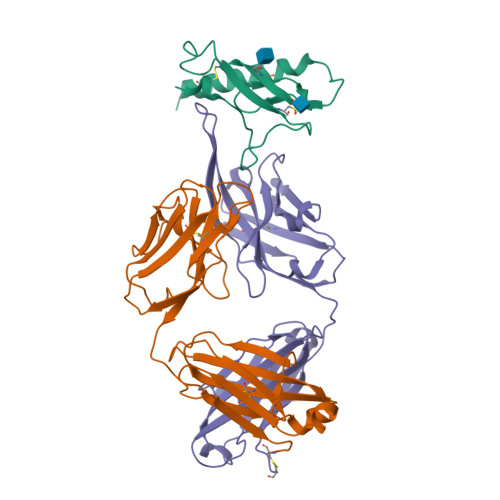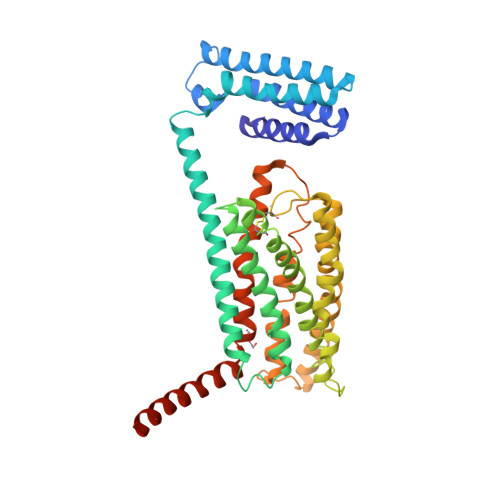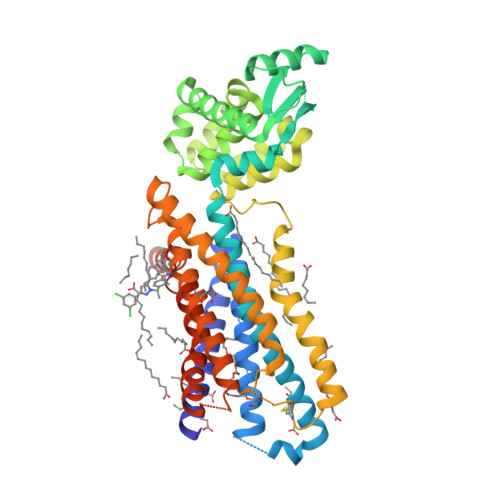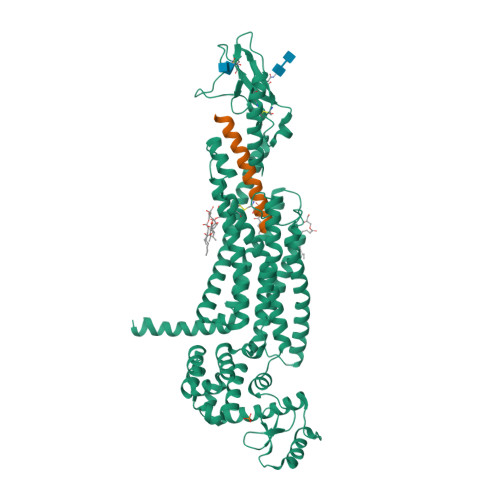
Top ▲

GtoPdb is requesting financial support from commercial users. Please see our sustainability page for more information.
Gene and Protein Information  |
||||||
| class B G protein-coupled receptor | ||||||
| Species | TM | AA | Chromosomal Location | Gene Symbol | Gene Name | Reference |
| Human | 7 | 477 | 17q25.3 | GCGR | glucagon receptor | 19,21 |
| Mouse | 7 | 485 | 11 E2 | Gcgr | glucagon receptor | 2 |
| Rat | 7 | 485 | 10q32.3 | Gcgr | glucagon receptor | 14,31 |
Previous and Unofficial Names  |
| GGR | GL-R | GR |
Database Links  |
|
| Specialist databases | |
| GPCRdb | glr_human (Hs), glr_mouse (Mm), glr_rat (Rn) |
| Other databases | |
| Alphafold | P47871 (Hs), Q61606 (Mm), P30082 (Rn) |
| CATH/Gene3D | 4.10.1240.10 |
| ChEMBL Target | CHEMBL1985 (Hs), CHEMBL4773 (Mm), CHEMBL4720 (Rn) |
| DrugBank Target | P47871 (Hs) |
| Ensembl Gene | ENSG00000215644 (Hs), ENSMUSG00000025127 (Mm), ENSRNOG00000036692 (Rn) |
| Entrez Gene | 2642 (Hs), 14527 (Mm), 24953 (Rn) |
| Human Protein Atlas | ENSG00000215644 (Hs) |
| KEGG Gene | hsa:2642 (Hs), mmu:14527 (Mm), rno:24953 (Rn) |
| OMIM | 138033 (Hs) |
| Pharos | P47871 (Hs) |
| RefSeq Nucleotide | NM_000160 (Hs), NM_008101 (Mm), NM_172091 (Rn) |
| RefSeq Protein | NP_000151 (Hs), NP_032127 (Mm), NP_742088 (Rn) |
| SynPHARM |
84366 (in complex with NNC0640) 84753 (in complex with NNC1702) |
| UniProtKB | P47871 (Hs), Q61606 (Mm), P30082 (Rn) |
| Wikipedia | GCGR (Hs) |
Selected 3D Structures  |
|||||||||||||

|
|
||||||||||||

|
|
||||||||||||

|
|
||||||||||||

|
|
||||||||||||

|
|
||||||||||||
Natural/Endogenous Ligands  |
| glucagon {Sp: Human, Mouse, Rat} |
Download all structure-activity data for this target as a CSV file 
| Agonists | |||||||||||||||||||||||||||||||||||||||||||||||||||||||||||||||||||||||||||||||||||||||||||||||||||||||||||||||||||||||||||||||||||||||||||||||||||||||||||||||||||||||||||||||||||||||||||||||||||||||||||||||||||||||||||||||||||||||||||||||||||||||||||||||||||||||||||||||||||||||||||||||||||||||||||||||||||||||||||||||||||||||||||||||||||
| Key to terms and symbols | View all chemical structures | Click column headers to sort | |||||||||||||||||||||||||||||||||||||||||||||||||||||||||||||||||||||||||||||||||||||||||||||||||||||||||||||||||||||||||||||||||||||||||||||||||||||||||||||||||||||||||||||||||||||||||||||||||||||||||||||||||||||||||||||||||||||||||||||||||||||||||||||||||||||||||||||||||||||||||||||||||||||||||||||||||||||||||||||||||||||||||||||||||
|
|||||||||||||||||||||||||||||||||||||||||||||||||||||||||||||||||||||||||||||||||||||||||||||||||||||||||||||||||||||||||||||||||||||||||||||||||||||||||||||||||||||||||||||||||||||||||||||||||||||||||||||||||||||||||||||||||||||||||||||||||||||||||||||||||||||||||||||||||||||||||||||||||||||||||||||||||||||||||||||||||||||||||||||||||||
| View species-specific agonist tables | |||||||||||||||||||||||||||||||||||||||||||||||||||||||||||||||||||||||||||||||||||||||||||||||||||||||||||||||||||||||||||||||||||||||||||||||||||||||||||||||||||||||||||||||||||||||||||||||||||||||||||||||||||||||||||||||||||||||||||||||||||||||||||||||||||||||||||||||||||||||||||||||||||||||||||||||||||||||||||||||||||||||||||||||||||
| Antagonists | |||||||||||||||||||||||||||||||||||||||||||||||||||||||||||||||||||||||||||||||||||||||||||||||||||||||||||||||||||||||||||||||||||||||||||||||||||||||||||||||||||||||||||||||||||||||||||||||||||||||||||||||||||||||||||||||||||||||||||||||||||||||||||||||||||||||||||||||||||
| Key to terms and symbols | View all chemical structures | Click column headers to sort | |||||||||||||||||||||||||||||||||||||||||||||||||||||||||||||||||||||||||||||||||||||||||||||||||||||||||||||||||||||||||||||||||||||||||||||||||||||||||||||||||||||||||||||||||||||||||||||||||||||||||||||||||||||||||||||||||||||||||||||||||||||||||||||||||||||||||||||||||
|
|||||||||||||||||||||||||||||||||||||||||||||||||||||||||||||||||||||||||||||||||||||||||||||||||||||||||||||||||||||||||||||||||||||||||||||||||||||||||||||||||||||||||||||||||||||||||||||||||||||||||||||||||||||||||||||||||||||||||||||||||||||||||||||||||||||||||||||||||||
| View species-specific antagonist tables | |||||||||||||||||||||||||||||||||||||||||||||||||||||||||||||||||||||||||||||||||||||||||||||||||||||||||||||||||||||||||||||||||||||||||||||||||||||||||||||||||||||||||||||||||||||||||||||||||||||||||||||||||||||||||||||||||||||||||||||||||||||||||||||||||||||||||||||||||||
| Allosteric Modulators | |||||||||||||||||||||||||||||||||||||||||||||||||||||||||||||||||||||||||||||||||||
| Key to terms and symbols | View all chemical structures | Click column headers to sort | |||||||||||||||||||||||||||||||||||||||||||||||||||||||||||||||||||||||||||||||||
|
|||||||||||||||||||||||||||||||||||||||||||||||||||||||||||||||||||||||||||||||||||
| Antibodies | |||||||||||||||||||||||||||||||||||||||||||||||||||||||||||||||||||||||||||||||||||||||||||||||||||||||||||||||||||||||||||||||||||||||||||||||||||
| Key to terms and symbols | Click column headers to sort | ||||||||||||||||||||||||||||||||||||||||||||||||||||||||||||||||||||||||||||||||||||||||||||||||||||||||||||||||||||||||||||||||||||||||||||||||||
|
|||||||||||||||||||||||||||||||||||||||||||||||||||||||||||||||||||||||||||||||||||||||||||||||||||||||||||||||||||||||||||||||||||||||||||||||||||
Primary Transduction Mechanisms 
|
|
| Transducer | Effector/Response |
| Gs family | Adenylyl cyclase stimulation |
| References: 23 | |
Tissue Distribution 
|
||||||||
|
||||||||
|
||||||||
|
Expression Datasets  |
|
|
Functional Assays 
|
||||||||||
|
Physiological Functions 
|
||||||||
|
||||||||
|
||||||||
|
Physiological Consequences of Altering Gene Expression 
|
||||||||||
|
Phenotypes, Alleles and Disease Models 
|
Mouse data from MGI | ||||||||||||||||||||||||||||||||||||||||||||||||||||||||||||||||||||||||||||||||||||||||||||||||||||||||||||||||||
|
|||||||||||||||||||||||||||||||||||||||||||||||||||||||||||||||||||||||||||||||||||||||||||||||||||||||||||||||||||
Biologically Significant Variants 
|
||||||||||
|
1. Ahn JM, Medeiros M, Trivedi D, Hruby VJ. (2001) Development of potent glucagon antagonists: structure-activity relationship study of glycine at position 4. J Pept Res, 58 (2): 151-8. [PMID:11532074]
2. Burcelin R, Li J, Charron MJ. (1995) Cloning and sequence analysis of the murine glucagon receptor-encoding gene. Gene, 164 (2): 305-10. [PMID:7590348]
3. CAHILL Jr GF, EARLE AS, ZOTTU S. (1957) In vivo effects of glucagon on hepatic glycogen, phosphorylase and glucose-6-phosphatase. Endocrinology, 60 (2): 265-9. [PMID:13397492]
4. Campos RV, Lee YC, Drucker DJ. (1994) Divergent tissue-specific and developmental expression of receptors for glucagon and glucagon-like peptide-1 in the mouse. Endocrinology, 134 (5): 2156-64. [PMID:8156917]
5. Cascieri MA, Koch GE, Ber E, Sadowski SJ, Louizides D, de Laszlo SE, Hacker C, Hagmann WK, MacCoss M, Chicchi GG et al.. (1999) Characterization of a novel, non-peptidyl antagonist of the human glucagon receptor. J Biol Chem, 274 (13): 8694-7. [PMID:10085108]
6. Coskun T, Urva S, Roell WC, Qu H, Loghin C, Moyers JS, O'Farrell LS, Briere DA, Sloop KW, Thomas MK et al.. (2022) LY3437943, a novel triple glucagon, GIP, and GLP-1 receptor agonist for glycemic control and weight loss: From discovery to clinical proof of concept. Cell Metab, 34 (9): 1234-1247.e9. [PMID:35985340]
7. Duffy JL, Kirk BA, Konteatis Z, Campbell EL, Liang R, Brady EJ, Candelore MR, Ding VD, Jiang G, Liu F et al.. (2005) Discovery and investigation of a novel class of thiophene-derived antagonists of the human glucagon receptor. Bioorg Med Chem Lett, 15 (5): 1401-5. [PMID:15713396]
8. Dunphy JL, Taylor RG, Fuller PJ. (1998) Tissue distribution of rat glucagon receptor and GLP-1 receptor gene expression. Mol Cell Endocrinol, 141 (1-2): 179-86. [PMID:9723898]
9. Exton JH, Park CR. (1966) The stimulation of gluconeogenesis from lactate by epinephrine, glucagon and cyclic 3í-5í-adenylate in the perfused rat liver. Pharmacol Rev, 18: 181-188. [PMID:5904135]
10. Gelling RW, Du XQ, Dichmann DS, Romer J, Huang H, Cui L, Obici S, Tang B, Holst JJ, Fledelius C et al.. (2003) Lower blood glucose, hyperglucagonemia, and pancreatic alpha cell hyperplasia in glucagon receptor knockout mice. Proc Natl Acad Sci USA, 100 (3): 1438-43. [PMID:12552113]
11. Hager J, Hansen L, Vaisse C, Vionnet N, Philippi A, Poller W, Velho G, Carcassi C, Contu L, Julier C et al.. (1995) A missense mutation in the glucagon receptor gene is associated with non-insulin-dependent diabetes mellitus. Nat Genet, 9 (3): 299-304. [PMID:7773293]
12. Hansen LH, Abrahamsen N, Nishimura E. (1995) Glucagon receptor mRNA distribution in rat tissues. Peptides, 16 (6): 1163-6. [PMID:8532603]
13. Jazayeri A, Doré AS, Lamb D, Krishnamurthy H, Southall SM, Baig AH, Bortolato A, Koglin M, Robertson NJ, Errey JC et al.. (2016) Extra-helical binding site of a glucagon receptor antagonist. Nature, 533 (7602): 274-7. [PMID:27111510]
14. Jelinek LJ, Lok S, Rosenberg GB, Smith RA, Grant FJ, Biggs S, Bensch PA, Kuijper JL, Sheppard PO, Sprecher CA et al.. (1993) Expression cloning and signaling properties of the rat glucagon receptor. Science, 259 (5101): 1614-6. [PMID:8384375]
15. Kazda CM, Ding Y, Kelly RP, Garhyan P, Shi C, Lim CN, Fu H, Watson DE, Lewin AJ, Landschulz WH et al.. (2016) Evaluation of Efficacy and Safety of the Glucagon Receptor Antagonist LY2409021 in Patients With Type 2 Diabetes: 12- and 24-Week Phase 2 Studies. Diabetes Care, 39 (7): 1241-9. [PMID:26681715]
16. Kelly RP, Garhyan P, Raddad E, Fu H, Lim CN, Prince MJ, Pinaire JA, Loh MT, Deeg MA. (2015) Short-term administration of the glucagon receptor antagonist LY2409021 lowers blood glucose in healthy people and in those with type 2 diabetes. Diabetes Obes Metab, 17 (4): 414-22. [PMID:25656305]
17. Koth CM, Murray JM, Mukund S, Madjidi A, Minn A, Clarke HJ, Wong T, Chiang V, Luis E, Estevez A et al.. (2012) Molecular basis for negative regulation of the glucagon receptor. Proc Natl Acad Sci USA, 109 (36): 14393-8. [PMID:22908259]
18. Lefebvre P. (1966) The physiological effect of glucagon on fat mobilization. Diabetologia, 2: 130-132. [PMID:6005201]
19. Lok S, Kuijper JL, Jelinek LJ, Kramer JM, Whitmore TE, Sprecher CA, Mathewes S, Grant FJ, Biggs SH, Rosenberg GB et al.. (1994) The human glucagon receptor encoding gene: structure, cDNA sequence and chromosomal localization. Gene, 140 (2): 203-9. [PMID:8144028]
20. Madsen P, Knudsen LB, Wiberg FC, Carr RD. (1998) Discovery and structure-activity relationship of the first non-peptide competitive human glucagon receptor antagonists. J Med Chem, 41 (26): 5150-7. [PMID:9857085]
21. Menzel S, Stoffel M, Espinosa 3rd R, Fernald AA, Le Beau MM, Bell GI. (1994) Localization of the glucagon receptor gene to human chromosome band 17q25. Genomics, 20 (2): 327-8. [PMID:8020989]
22. Mezo AR, Chen Y, Valenzuela FA, Qu H. (2018) Glucagon and GLP-1 co-agonist compounds. Patent number: US9938335B2. Assignee: Eli Lilly and Co. Priority date: 16/06/2016. Publication date: 10/04/2018.
23. Northup JK, Smigel MD, Sternweis PC, Gilman AG. (1983) The subunits of the stimulatory regulatory component of adenylate cyclase. Resolution of the activated 45,000-dalton (alpha) subunit. J Biol Chem, 258: 11369-11376. [PMID:6309844]
24. Okamoto H, Kim J, Aglione J, Lee J, Cavino K, Na E, Rafique A, Kim JH, Harp J, Valenzuela DM et al.. (2015) Glucagon Receptor Blockade With a Human Antibody Normalizes Blood Glucose in Diabetic Mice and Monkeys. Endocrinology, 156 (8): 2781-94. [PMID:26020795]
25. Parker JC, Andrews KM, Allen MR, Stock JL, McNeish JD. (2002) Glycemic control in mice with targeted disruption of the glucagon receptor gene. Biochem Biophys Res Commun, 290: 839-843. [PMID:11785978]
26. Petersen KF, Sullivan JT. (2001) Effects of a novel glucagon receptor antagonist (Bay 27-9955) on glucagon-stimulated glucose production in humans. Diabetologia, 44 (11): 2018-24. [PMID:11719833]
27. Pohl SL, Birnbaumer L, Rodbell M. (1969) Glucagon-sensitive adenyl cylase in plasma membrane of hepatic parenchymal cells. Science, 164 (3879): 566-7. [PMID:4305077]
28. Qureshi SA, Rios Candelore M, Xie D, Yang X, Tota LM, Ding VD, Li Z, Bansal A, Miller C, Cohen SM et al.. (2004) A novel glucagon receptor antagonist inhibits glucagon-mediated biological effects. Diabetes, 53 (12): 3267-73. [PMID:15561959]
29. Siani A, Iacone R, Russo O, Barba G, Russo P, Cappuccio FP, Galletti F, Strazzullo P. (2001) Gly40Ser polymorphism of the glucagon receptor gene is associated with central adiposity in men. Obes Res, 9 (11): 722-6. [PMID:11707539]
30. Siu FY, He M, de Graaf C, Han GW, Yang D, Zhang Z, Zhou C, Xu Q, Wacker D, Joseph JS et al.. (2013) Structure of the human glucagon class B G-protein-coupled receptor. Nature, 499 (7459): 444-9. [PMID:23863937]
31. Szpirer C, Szpirer J, Vanvooren P, Rivière M, Maget B, Svoboda M, Shiozawa M, Simon JS, Jacob HJ, Koike G. (1997) Localization of the rat genes encoding glucagon, glucagon receptor, and insulin receptor, candidates for diabetes mellitus susceptibility loci. Mamm Genome, 8 (8): 586-8. [PMID:9250867]
32. Unson CG, Andreu D, Gurzenda EM, Merrifield RB. (1987) Synthetic peptide antagonists of glucagon. Proc Natl Acad Sci USA, 84 (12): 4083-7. [PMID:3035568]
33. Unson CG, Gurzenda EM, Merrifield RB. (1989) Biological activities of des-His1[Glu9]glucagon amide, a glucagon antagonist. Peptides, 10 (6): 1171-7. [PMID:2560175]
34. Vajda EG, Potter SC, Fujitaki JM, Reddy RK, Van Poelje PD, Lee YH, Henderson I, Zhi L, Marschke KB. (2012) LGD‐6972, a potent, orally‐bioavailable, small molecule glucagon receptor antagonist for the treatment of type 2 diabetes. Diabetes, 61 (suppl 1): A252 Abstract 989-P. DOI: 10.2337/db12-836-1328
35. Wright DE, Hruby VJ, Rodbell M. (1978) A reassessment of structure-function relationships in glucagon. Glucagon1-21 is a full agonist. J Biol Chem, 253 (18): 6338-40. [PMID:210180]
36. Wright DE, Rodbell M. (1979) Glucagon1-6 binds to the glucagon receptor and activates hepatic adenylate cyclase. J Biol Chem, 254: 268-269. [PMID:216670]
37. Xiong Y, Guo J, Candelore MR, Liang R, Miller C, Dallas-Yang Q, Jiang G, McCann PE, Qureshi SA, Tong X et al.. (2012) Discovery of a novel glucagon receptor antagonist N-[(4-{(1S)-1-[3-(3, 5-dichlorophenyl)-5-(6-methoxynaphthalen-2-yl)-1H-pyrazol-1-yl]ethyl}phenyl)carbonyl]-β-alanine (MK-0893) for the treatment of type II diabetes. J Med Chem, 55 (13): 6137-48. [PMID:22708876]
38. Zhang H, Qiao A, Yang D, Yang L, Dai A, de Graaf C, Reedtz-Runge S, Dharmarajan V, Zhang H, Han GW et al.. (2017) Structure of the full-length glucagon class B G-protein-coupled receptor. Nature, 546 (7657): 259-264. [PMID:28514451]
39. Zhang H, Qiao A, Yang L, Van Eps N, Frederiksen KS, Yang D, Dai A, Cai X, Zhang H, Yi C et al.. (2018) Structure of the glucagon receptor in complex with a glucagon analogue. Nature, 553 (7686): 106-110. [PMID:29300013]
40. Zimmermann T, Thomas L, Baader-Pagler T, Haebel P, Simon E, Reindl W, Bajrami B, Rist W, Uphues I, Drucker DJ et al.. (2022) BI 456906: Discovery and preclinical pharmacology of a novel GCGR/GLP-1R dual agonist with robust anti-obesity efficacy. Mol Metab, 66: 101633. [PMID:36356832]